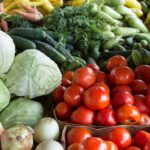
The Agriculture Definition and its Impact on Rural Development

Cultivating Success: Exploring the Agriculture Definition and its Impact on Rural Economic Growth.
Important Characteristics of Agriculture Definition and its Impact on Rural Economic Growth.
Why the agriculture sector is important for the development
The agriculture sector plays a crucial role in the development of any country. Not only does it provide a sustainable food source for the population, but it also contributes significantly to the overall economic growth of a nation, particularly in rural areas. There are several reasons why the agriculture sector is important for development. Firstly, agriculture is a significant source of employment, especially in rural communities. It provides opportunities for local farmers, laborers, and other related industries such as food processing and distribution. By creating jobs, the agriculture sector helps alleviate poverty and reduces unemployment rates, thus contributing to the overall economic stability of the country.
Secondly, agriculture promotes self-sufficiency and food security. A nation that can produce its own food is less dependent on imports, ensuring a stable and reliable food supply for its citizens. This not only reduces the vulnerability to price fluctuations and supply chain disruptions but also fosters national resilience in times of crisis.
Additionally, the agriculture sector contributes to the export industry, generating foreign exchange earnings for the country. Agricultural products like crops, livestock, and processed goods can be exported to other countries, bringing in revenue that can be used to invest in other sectors or infrastructure development. This helps to diversify the economy and reduce reliance on a single industry.
Moreover, the agriculture sector is closely linked to the preservation of natural resources and the environment. Sustainable farming practices, such as organic farming and agroforestry, promote soil conservation, water management, and biodiversity preservation. By valuing and protecting natural resources, agriculture contributes to a more sustainable and resilient ecosystem, ensuring the long-term viability of the sector.
On agriculture definition the agriculture sector is vital for the development of a country. From providing employment opportunities and ensuring food security to contributing to the economy and preserving the environment, agriculture plays a multifaceted role in fostering rural economic growth and overall national progress. It is essential for governments and policymakers to recognize the significance of the agriculture sector and invest in its development to create a sustainable and prosperous future.
Agricultural credit and economic growth in rural areas
Agricultural credit plays a crucial role in fostering economic growth in rural areas. It provides farmers with the necessary financial resources to invest in their farms, purchase equipment and supplies, and expand their operations. By accessing credit, farmers can improve their productivity, enhance the quality of their produce, and increase their profits.
Agriculture definition – One of the key benefits of agricultural credit is its ability to stimulate entrepreneurship and innovation in rural communities. With access to credit, farmers can explore new ideas, adopt modern farming techniques, and invest in research and development. This not only improves the efficiency and productivity of their own farms but also has a spillover effect on the entire agricultural sector, leading to overall economic growth in rural areas.
Moreover, agricultural credit helps in mitigating the risks and uncertainties associated with farming. Farmers often face unpredictable factors such as weather conditions, pests, and market fluctuations. With access to credit, they can better manage these risks by investing in insurance, diversifying their crops, and adopting sustainable farming practices. This stability, in turn, attracts more investments in the agricultural sector, creating a positive cycle of growth and prosperity. Additionally, agricultural credit promotes rural employment by enabling farmers to expand their businesses and hire more workers.
This not only provides income opportunities for local communities but also contributes to the overall development of rural areas. Increased employment leads to improved living standards, enhanced access to education and healthcare, and the creation of a vibrant rural economy. In conclusion, agricultural credit plays a significant role in driving economic growth in rural areas. By providing farmers with the necessary financial resources, it empowers them to invest in their farms, innovate, and mitigate risks. This, in turn, generates employment opportunities, enhances productivity, and contributes to the overall development of rural economies. Therefore, fostering a conducive environment for agricultural credit is essential for cultivating success and promoting sustainable rural economic growth.
Successful agricultural transformations
Successful agricultural transformations are crucial for rural economic growth. These transformations involve implementing innovative techniques, technologies, and strategies to maximize productivity and efficiency in the agricultural sector. One key aspect of a successful agricultural transformation is the adoption of modern farming practices. This includes using advanced machinery, precision agriculture techniques, and high-quality seeds and fertilizers to optimize crop yields. By embracing these practices, farmers can increase their output while minimizing resource usage and environmental impact.
Another essential factor in a successful agricultural transformation is the diversification of crops and value-added products. Instead of relying solely on traditional crops, farmers can explore new varieties that have higher market demand or adapt well to local conditions. Additionally, investing in processing facilities and value-added products allows farmers to capture more value from their agricultural produce. This not only boosts their income but also creates employment opportunities and stimulates local economies.
Furthermore, successful agricultural transformations prioritize the development of infrastructure and logistics. Building and maintaining reliable transportation networks, storage facilities, and market linkages are essential for connecting farmers to buyers and expanding market reach. This enables farmers to access better prices, reduce post-harvest losses, and ensure timely delivery of their products. Access to finance and support services also plays a crucial role in agricultural transformations. Providing farmers with affordable credit, insurance, and technical assistance helps them invest in modern technologies and manage risks effectively.
Moreover, facilitating knowledge sharing and training programs equips farmers with the necessary skills and information to adapt to changing market dynamics and emerging challenges. In conclusion, successful agricultural transformations are multifaceted endeavors that require the adoption of modern practices, diversification, infrastructure development, and access to finance and support services. By embracing these elements, rural communities can unlock the full potential of their agricultural sector, leading to improved livelihoods, increased productivity, and sustainable economic growth.

Economic Diversification of the Rural Economy – Agriculture Definition
Economic diversification is a crucial aspect of rural development and plays a significant role in cultivating success within the agriculture sector. While agriculture is often the backbone of rural economies, relying solely on farming can leave communities vulnerable to fluctuations in market conditions and climate-related challenges. Therefore, diversifying the rural economy by exploring alternative industries is essential for long-term sustainability and economic growth.
One way to achieve economic diversification is by promoting agri-tourism. Rural areas often possess unique landscapes, cultural heritage, and traditional farming practices that can attract tourists seeking authentic experiences. By developing tourism initiatives that showcase local agriculture, such as farm tours, farmers’ markets, or farm-to-table dining experiences, rural communities can generate additional income streams and create employment opportunities. Another approach to diversifying the rural economy is to support the growth of value-added agriculture.
This entails processing and transforming raw agricultural products into higher-value goods or services. For example, farmers can explore opportunities to produce specialty food products, artisanal beverages, or natural cosmetics using their crops or livestock. By adding value to their agricultural output, farmers can capture a larger share of the revenue chain and reduce their reliance on commodity prices. Additionally, promoting small-scale manufacturing and entrepreneurship in rural areas can also contribute to economic diversification. Encouraging the establishment of small businesses that cater to local needs, such as food processing facilities, agri-input providers, or eco-friendly packaging companies, not only creates job opportunities but also stimulates local economic activity.

Furthermore, investing in rural infrastructure, such as transportation, broadband connectivity, and storage facilities, is crucial for diversifying the economy. Improved infrastructure enables farmers and rural businesses to access larger markets, engage in e-commerce, and expand their reach beyond local demand. In conclusion on agriculture definition economic diversification is vital for the long-term success of rural economies. By exploring agri-tourism, value-added agriculture, small-scale manufacturing, and investing in infrastructure, rural communities can cultivate a more resilient and prosperous economy. Embracing these strategies ensures that agriculture continues to play a pivotal role in rural development while mitigating the risks associated with over-reliance on a single industry.









Leave a Reply